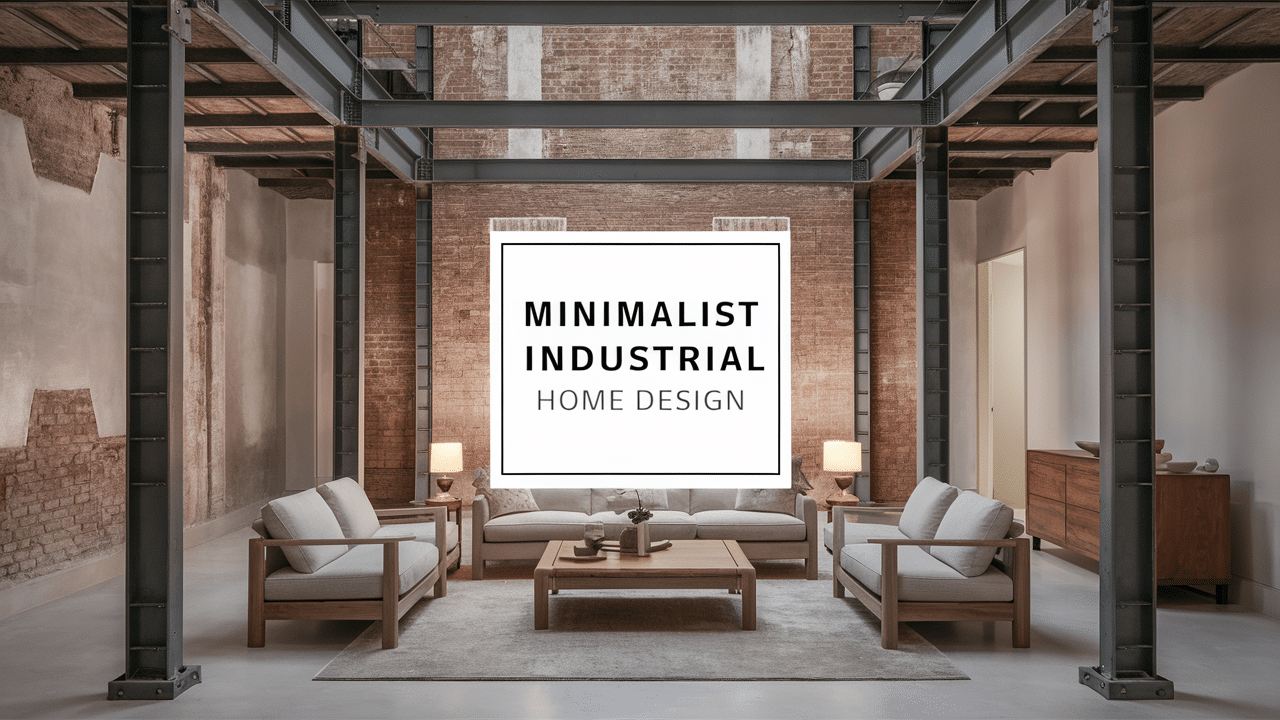Minimalist industrial design is all about blending simplicity with style. It focuses on clean lines, open spaces, and natural materials, creating a modern, uncluttered look. The charm of this style lies in its simplicity and how it turns everyday elements into statement pieces.
Think raw materials like wood, steel, and concrete paired with sleek furniture and neutral colors. This design feels both cozy and spacious without being too busy. If you want a home that looks stylish without overwhelming your senses, this is the way to go.
In this blog, I’ll walk you through some simple ideas for bringing minimalist industrial design into your space so you can create a home that’s both beautiful and functional.
What is Minimalist Industrial Design?
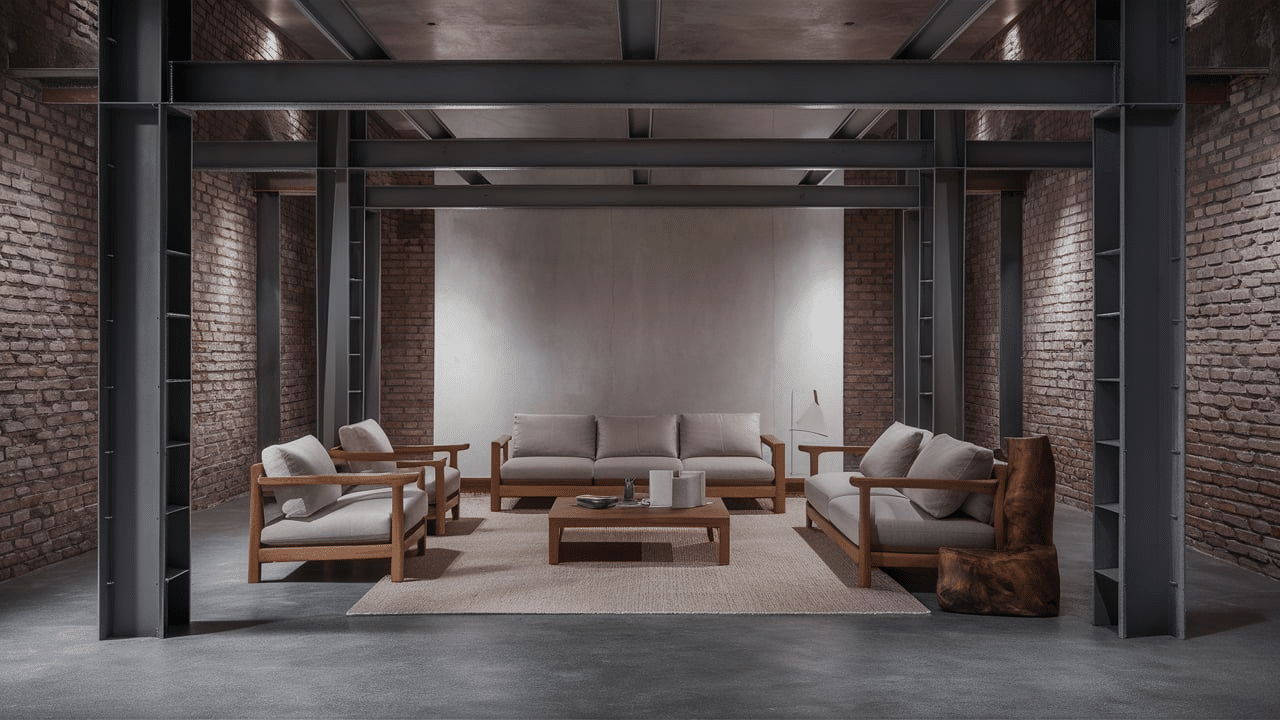
Minimalist industrial design takes the best of two worlds: minimalism and industrial style. Minimalism is all about keeping things simple, using only what you truly need, and avoiding excess. Industrial style, on the other hand, takes inspiration from old factories, warehouses, and lofts. It uses materials like metal, brick, and wood to create a raw, urban feel.
When combined, these two styles create a space that is open, airy, and easy to maintain. The design relies on a few key features—exposed materials, clean lines, and a neutral color palette—so the space feels calm and uncluttered.
Key Features of Minimalist Industrial Design
1. Open Floor Plans
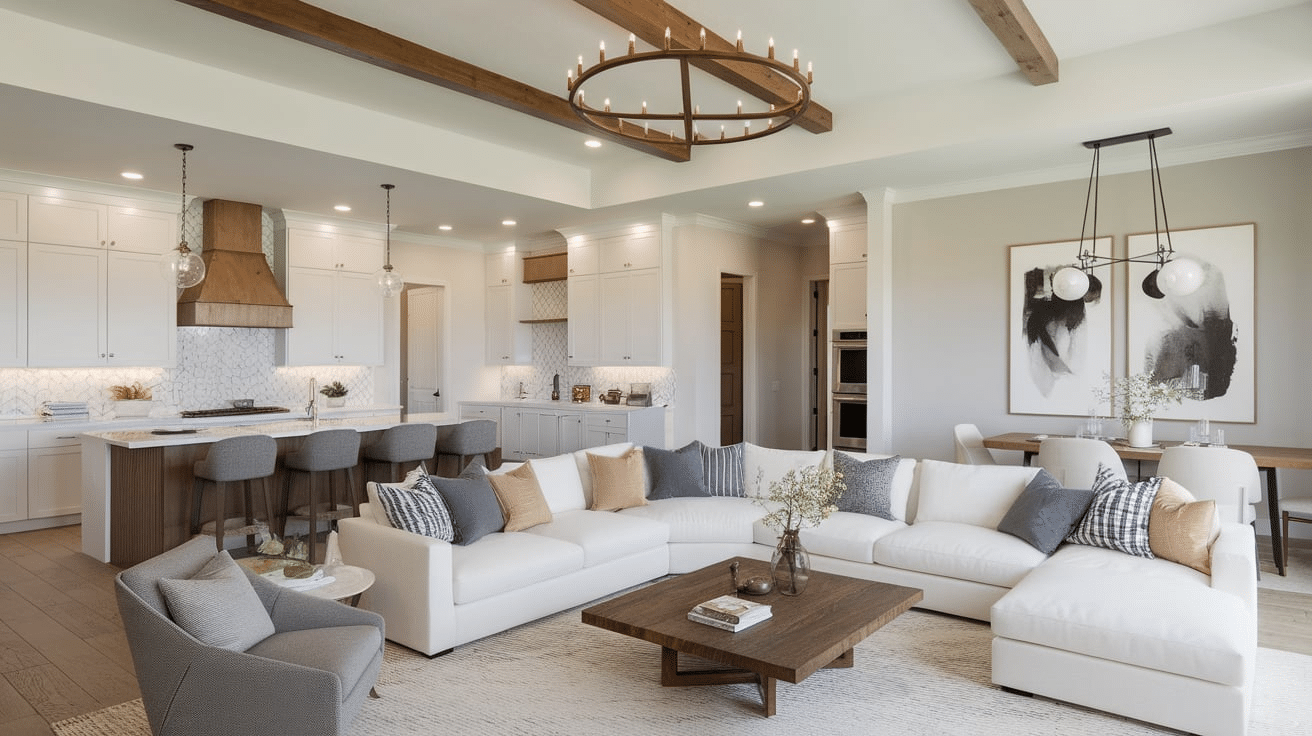
One of the first features you’ll notice in minimalist industrial homes is the open floor plan. The space feels airy and unconfined, with few walls separating different areas. The goal is to make the most of natural light and give the room a spacious feel. By keeping the layout open, you can create a more relaxed and functional living area.
2. Exposed Materials
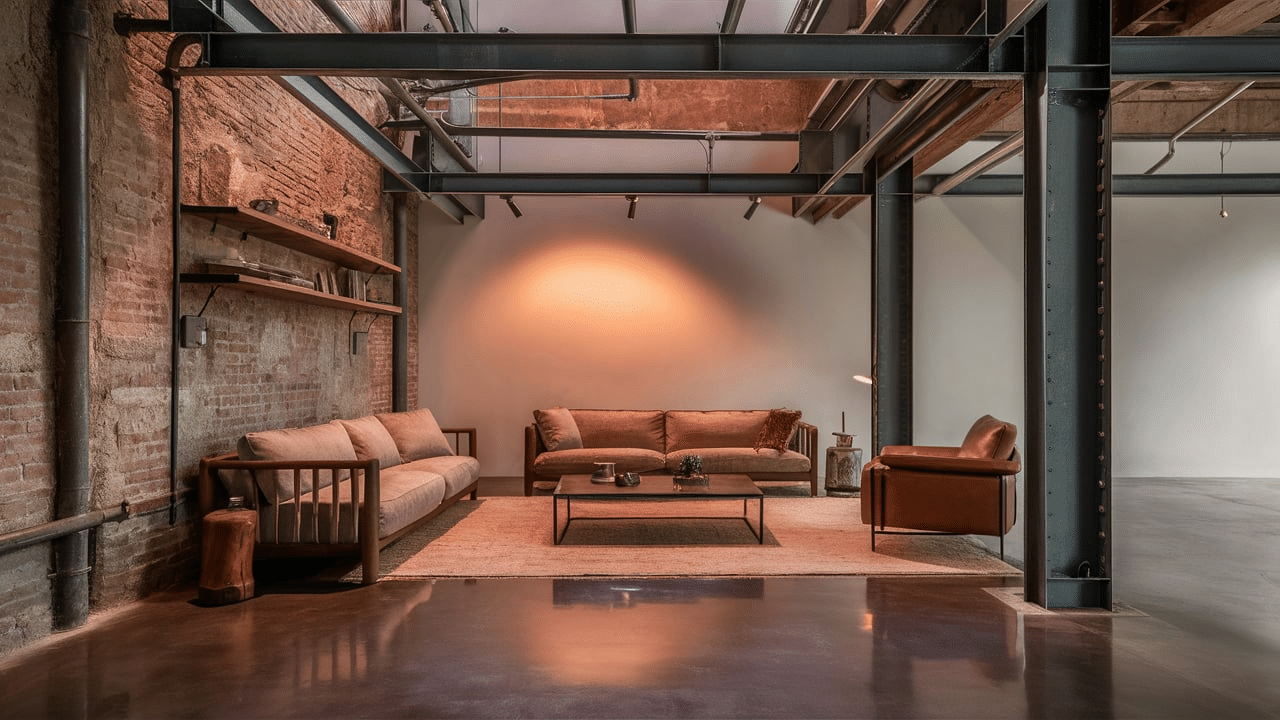
Exposed materials are a big part of the industrial style. This could include brick walls, metal beams, concrete floors, and wooden ceilings. These raw elements give the space a rough, urban charm while still looking stylish and modern. Minimalist industrial homes embrace these features, letting the materials shine on their own. Don’t be afraid to leave materials exposed, as this adds texture and warmth to the space.
3. Neutral Color Palette

In minimalist industrial design, colors tend to stay simple. Neutral shades like white, gray, beige, and black are common choices. These colors keep the space calm and allow the materials to stand out. You can also add small touches of color through accessories or artwork, but the base of the room should remain neutral to maintain that minimalist feel.
4. Functional Furniture
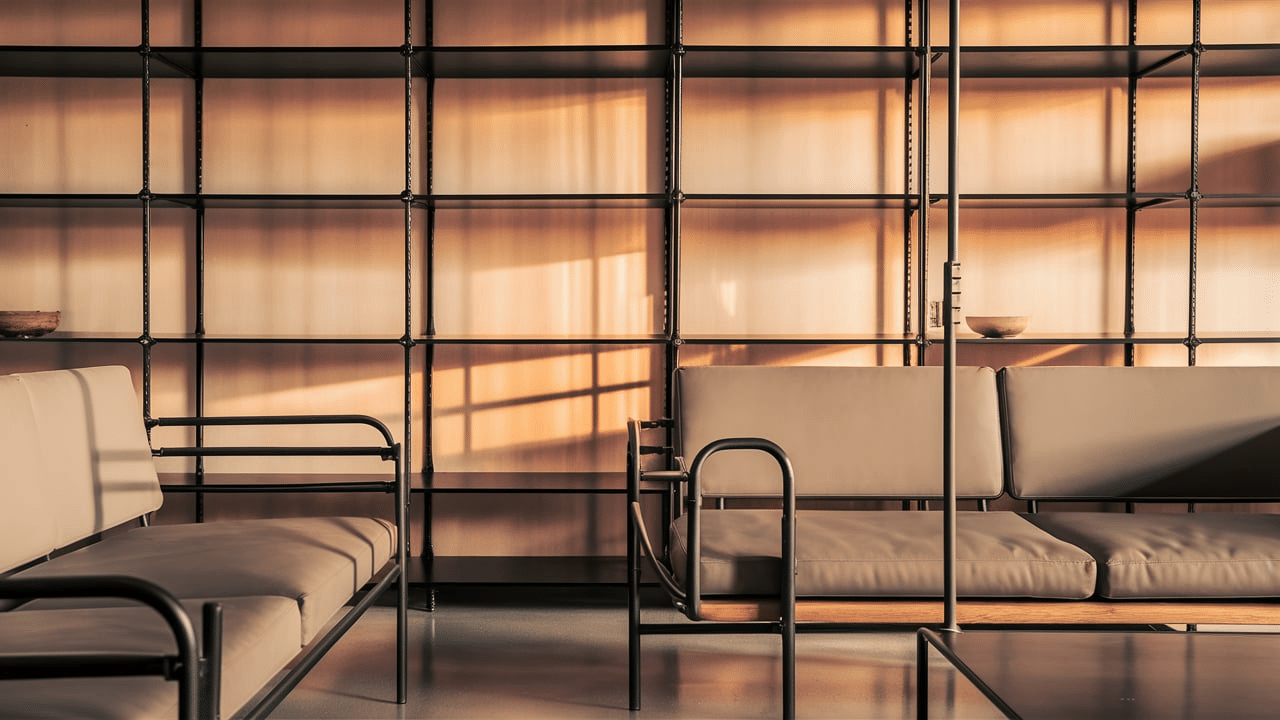
Minimalist industrial homes prioritize function over form. Furniture is chosen for its practicality and simple design. You’ll see clean lines, open shelving, and pieces made from metal or wood. The furniture doesn’t take away from the beauty of the space—it adds to it by keeping everything tidy and efficient.
Design Ideas for Your Minimalist Industrial Home
Now that we’ve covered the main features, let’s explore specific design ideas for bringing minimalist industrial style into your home. Here are some practical ways to achieve the look.
1. Use Open Shelving
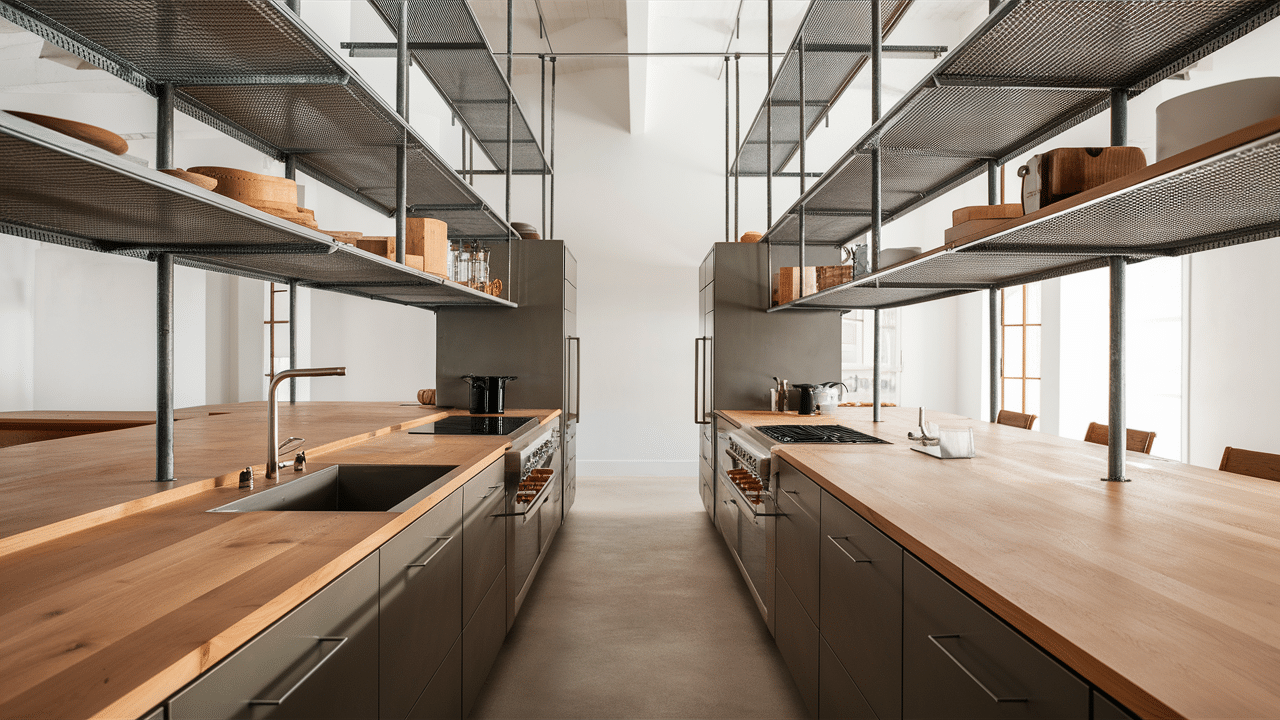
Instead of closed cabinets and drawers, go for open shelving. This is a common feature in minimalist industrial homes. It helps to keep the space open and makes it easier to access your things. You can use wood or metal shelving units to complement the industrial feel. If you prefer, you can add a few decorative items to your shelves, but remember to keep things simple and uncluttered.
2. Choose Industrial Lighting

Lighting plays a key role in minimalist industrial design. Opt for pendant lights, metal fixtures, or even exposed bulbs for an industrial touch. These types of lighting fixtures often have a simple, raw look that works well with the minimalist style. Make sure the lighting is functional, too, as it should brighten up the space without being too overpowering.
3. Incorporate Raw Materials
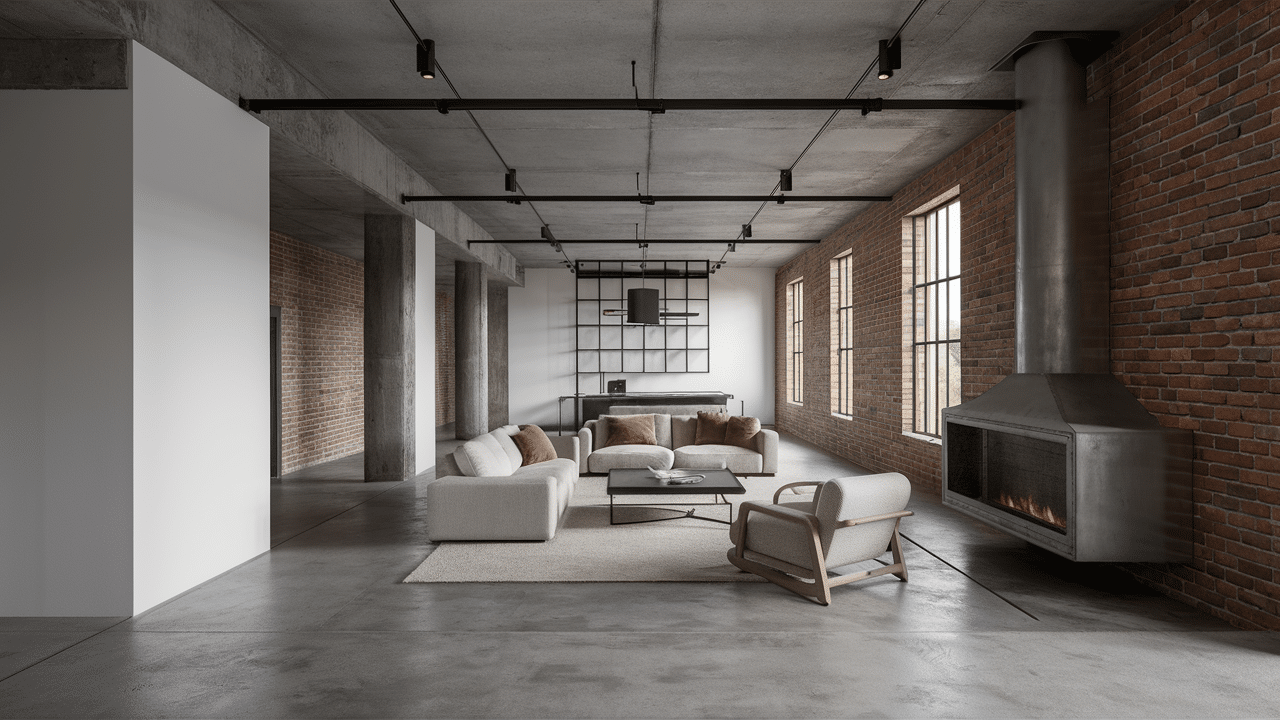
If you want to truly capture the essence of industrial style, embrace raw materials like brick, concrete, steel, and wood. For example, you can leave brick walls exposed or choose a concrete floor for a more industrial vibe. Wooden beams or metal railings can add texture and interest to the space. It’s all about keeping things natural and unpolished while still creating a warm and inviting atmosphere.
4. Use Neutral Fabrics
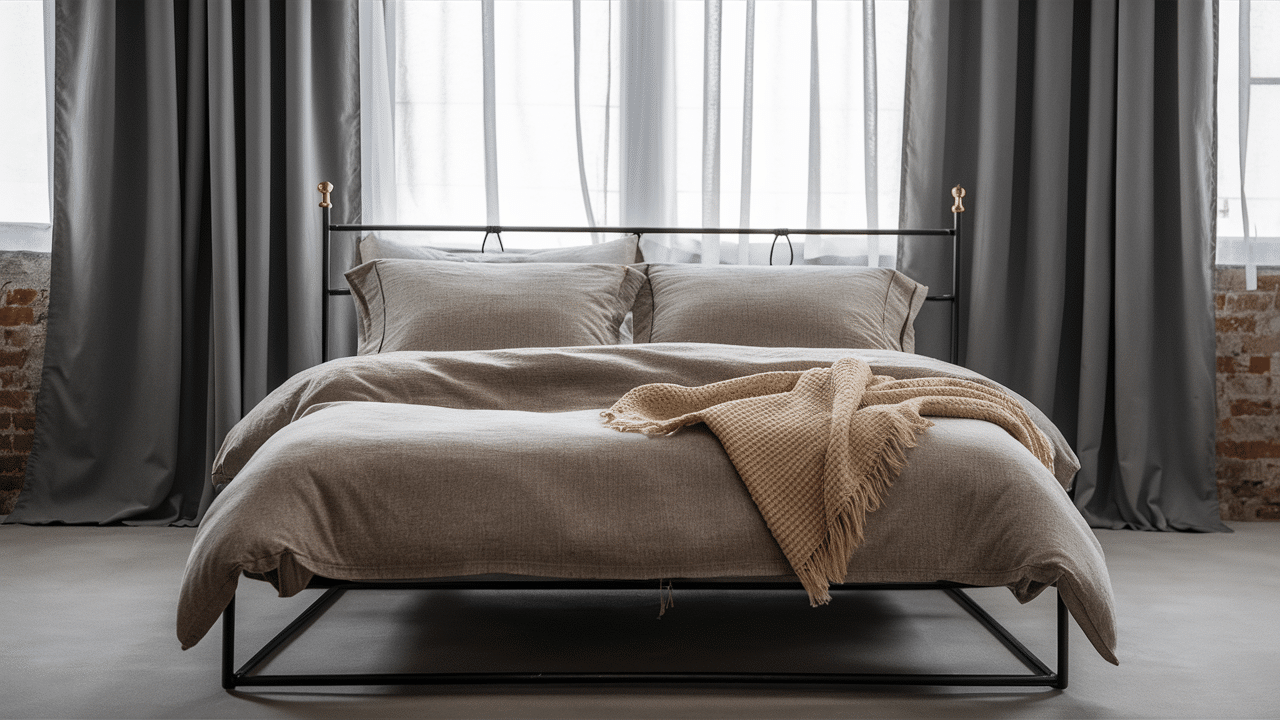
When it comes to fabrics, keep things neutral and simple. Choose linens, cotton, and wool in soft shades like gray, beige, and white. These materials look great in minimalist industrial spaces and can be used for everything from curtains to throw pillows. Stay away from bright colors or patterns, as these can disrupt the calm, quiet feeling you want to create.
5. Add Industrial Accents
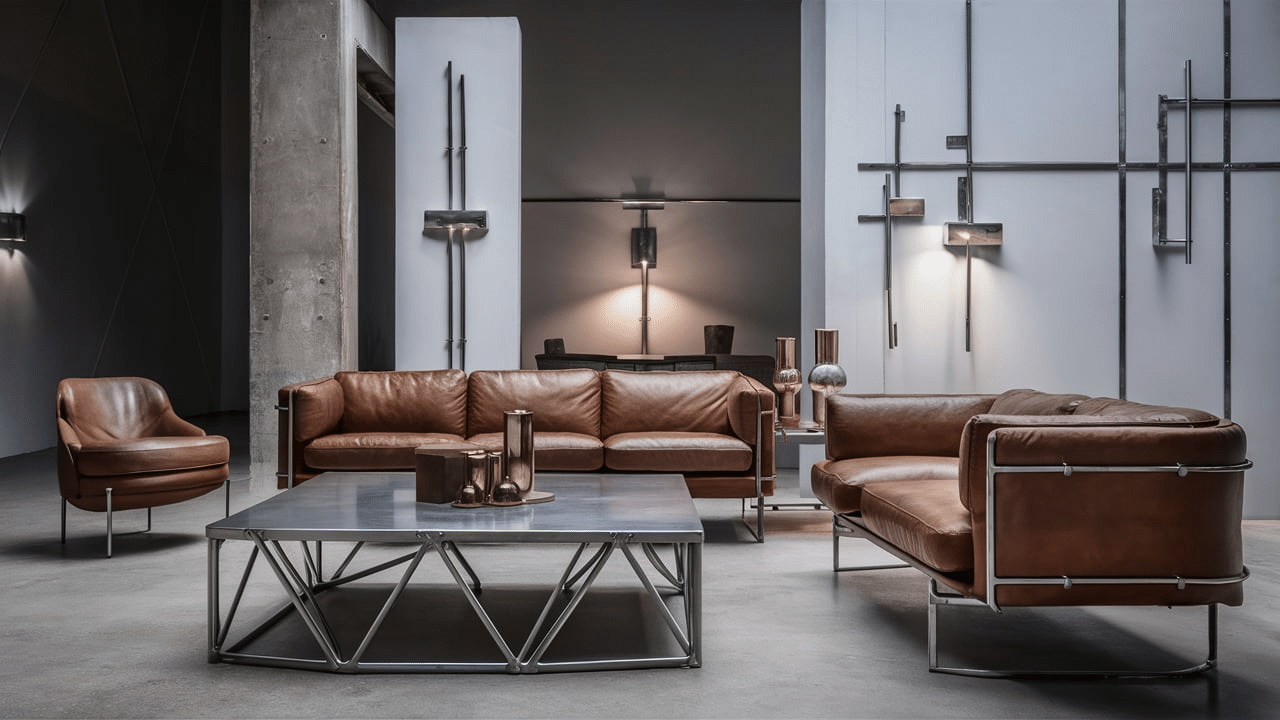
While the base of your design should be simple and neutral, you can still add small industrial accents. Think metal chairs, leather cushions, or steel coffee tables. These touches will help enhance the industrial vibe without overwhelming the space. A few carefully chosen accents can make your room feel stylish and interesting.
Color Schemes for a Minimalist Industrial Home
Choosing the right color scheme is important when designing a minimalist industrial home. The goal is to keep the space feeling open and serene while still having enough contrast to make it visually appealing.
1. Monochromatic Scheme
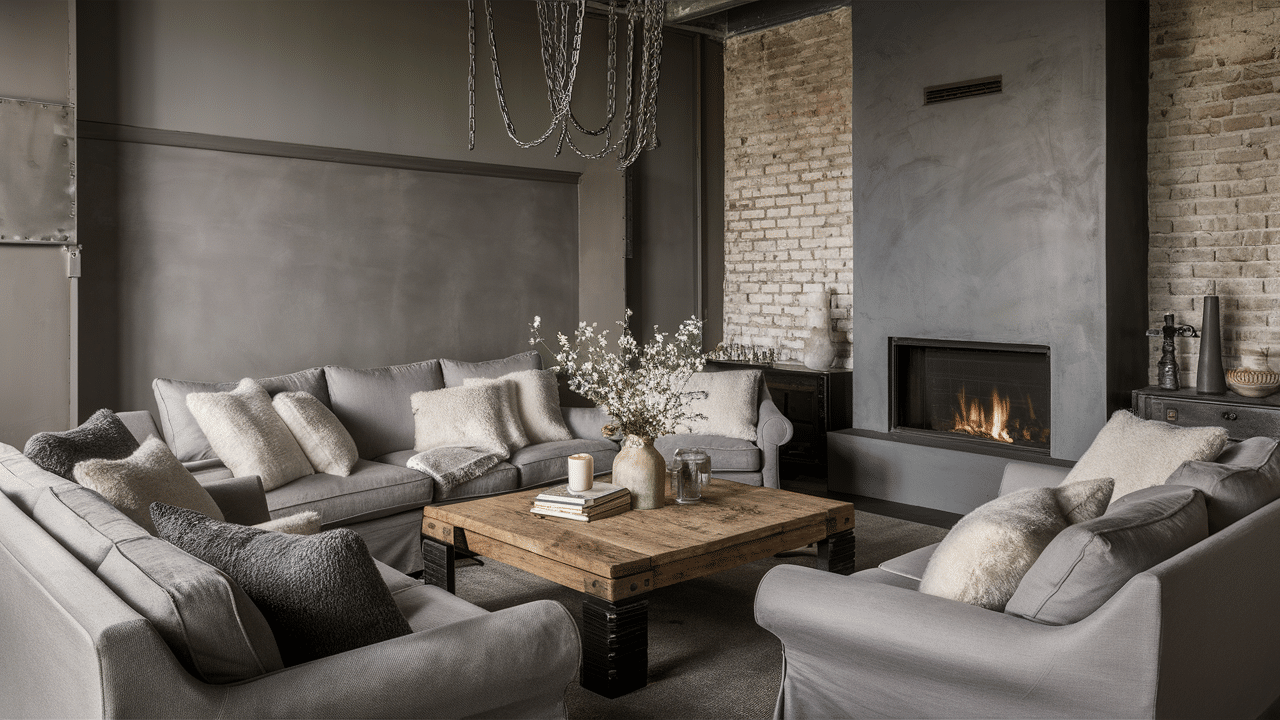
A monochromatic color scheme uses different shades of the same color. For example, you could use varying shades of gray or white throughout the room. This creates a calm, cohesive look that is easy on the eyes. Metal or wooden accents can break up the monotony to add texture and interest.
2. Black and White
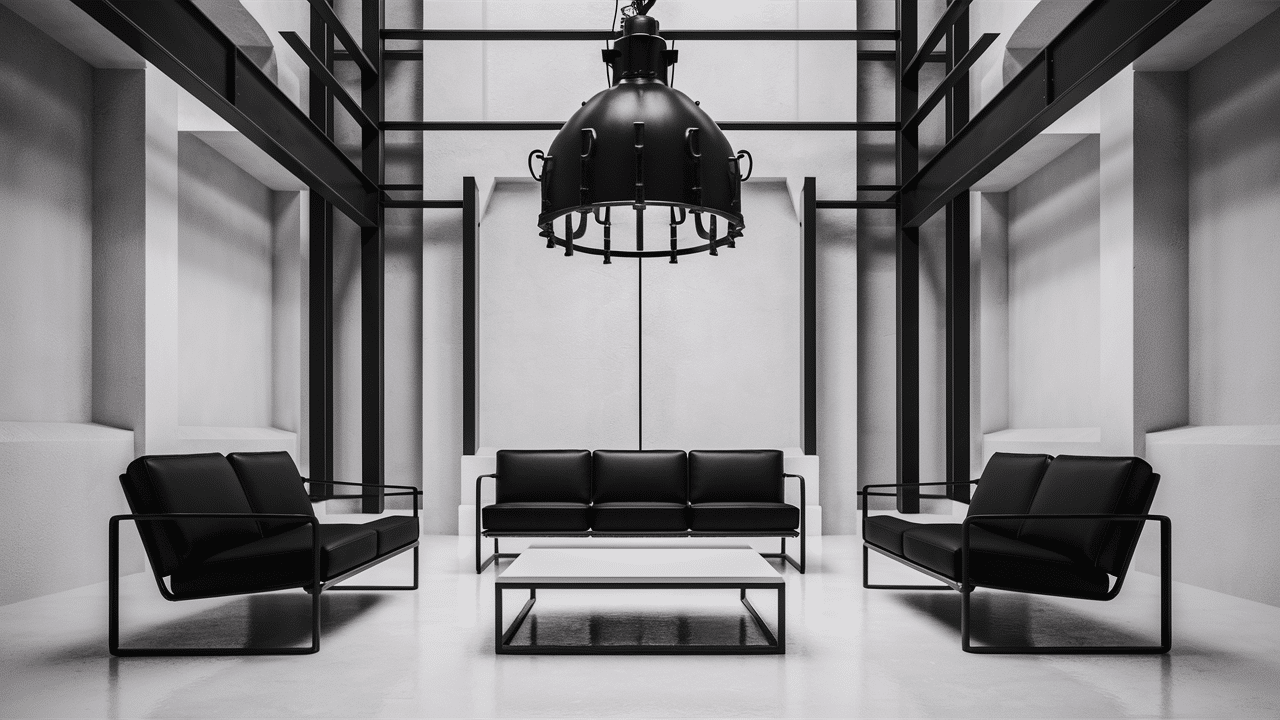
Black and white is a classic combination in minimalist industrial design. The boldness of black contrasts nicely with the softness of white, creating a striking visual balance. You can add black furniture, white walls, and neutral-colored floors to create a clean, sleek look.
3. Earthy Tones
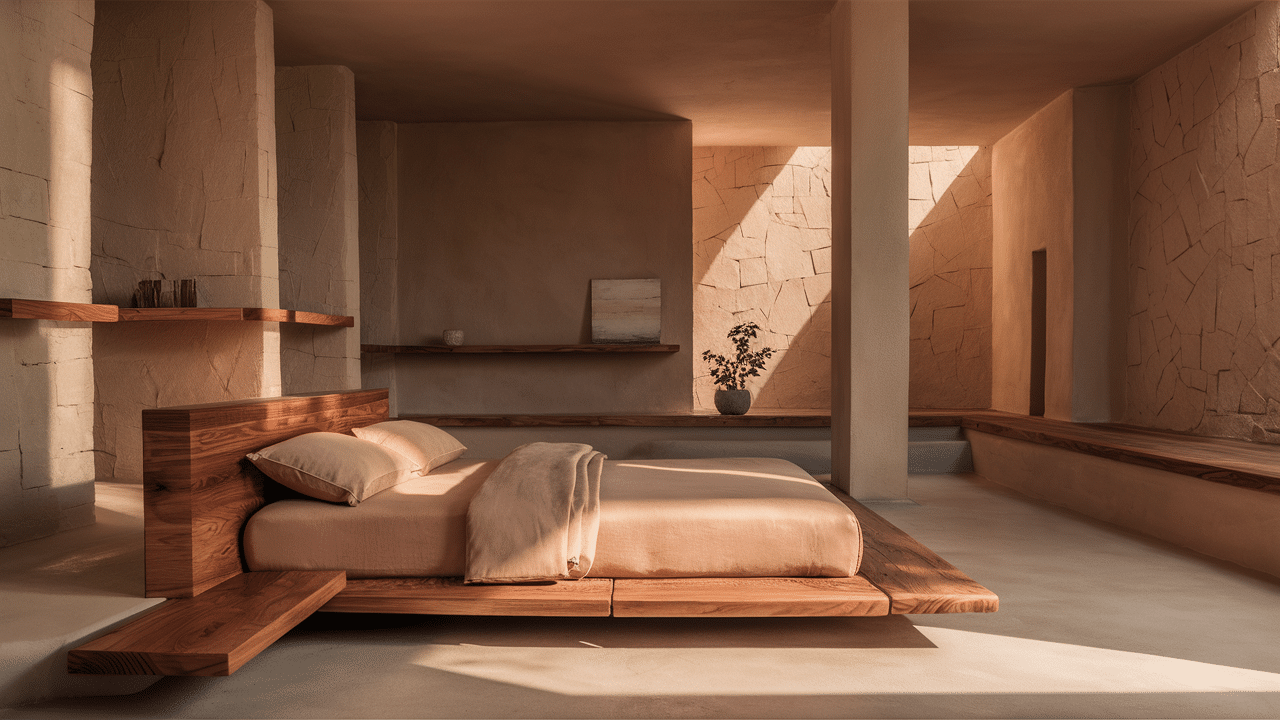
If you want a more grounded feel, try using earthy tones like browns, tans, and muted greens. These colors work well with natural materials like wood and stone, giving the space a warm, inviting atmosphere. Earthy tones also help to soften the raw edges of industrial elements like metal and concrete.
How to Create a Cozy Atmosphere in a Minimalist Industrial Home
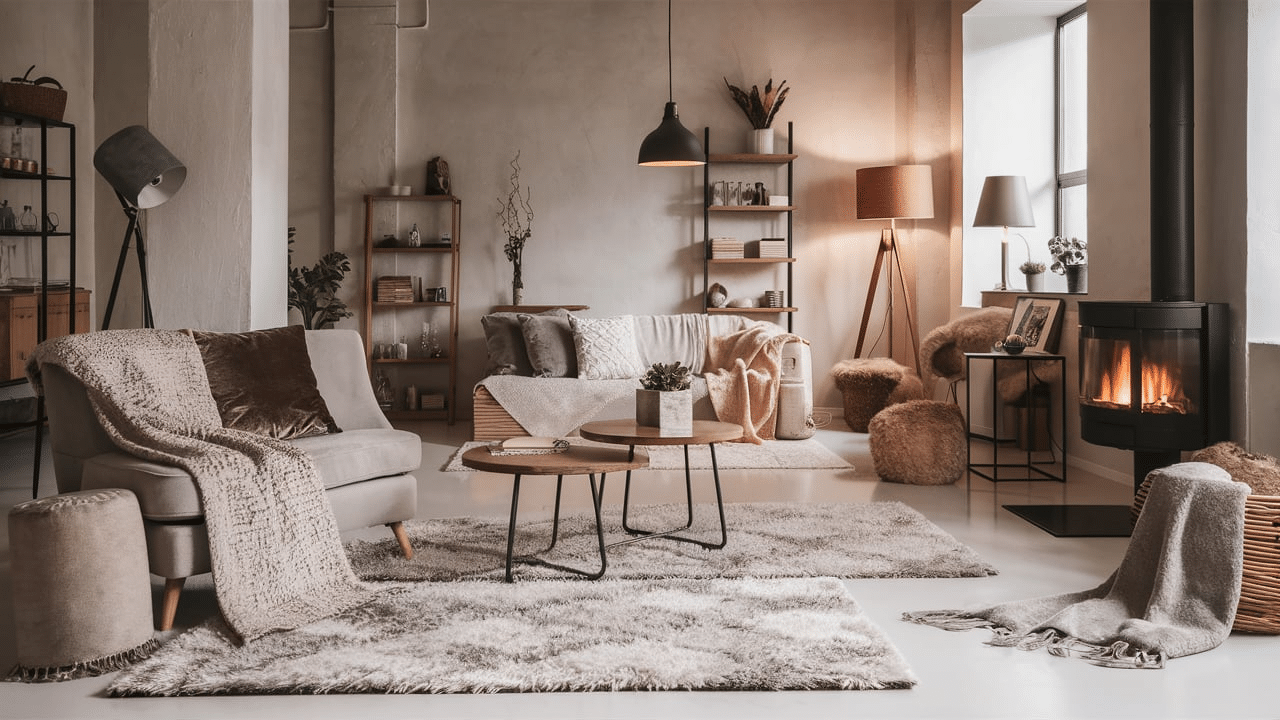
Although minimalist industrial design tends to favor a raw, open look, it’s still possible to create a cozy atmosphere. A few tips to make your home feel warm and inviting are:
1. Add Soft Textures
Since industrial spaces can sometimes feel cold and sterile, soft textures can help balance the look. Consider adding plush rugs, throw blankets, or velvet cushions to your furniture. These items will add warmth and comfort without overwhelming the minimalist aesthetic.
2. Incorporate Plants
Bringing nature indoors is a great way to soften the hard edges of industrial design. Plants add life and color to the space while also improving air quality. Opt for low-maintenance plants like succulents, ferns, or snake plants that fit the minimalist vibe.
3. Layer Lighting
To create a cozy atmosphere, use layered lighting. Combine ambient lighting (like overhead lights) with task lighting (like reading lamps) and accent lighting (like candles or pendant lights). This will help set the mood and make the space feel more welcoming.
Maintaining a Minimalist Industrial Home
One of the benefits of minimalist industrial design is that it’s easy to maintain. Since the focus is on functionality and simplicity, there’s less clutter to deal with. However, it’s important to keep a few tips in mind to maintain the look.
1. Keep it Tidy: Minimalist spaces rely on cleanliness to maintain their beauty. Make sure everything has a place, and avoid leaving items lying around. Regular cleaning will help keep your home looking sharp and organized.
2. Avoid Over-decorating: While it’s tempting to add a lot of accessories, minimalist industrial design is best when it’s kept simple. Only add decor that serves a purpose or enhances the space. Too much decoration can make the room feel cluttered, which goes against the minimalist principles.
3. Invest in Quality Pieces: When it comes to furniture and decor, it’s better to invest in high-quality pieces that will last. Minimalist industrial design is all about durability, so choose furniture that’s made from solid materials like wood, steel, and leather.
Conclusion
Minimalist industrial design offers a perfect blend of simplicity and style. It focuses on open spaces, natural materials, and functional furniture, creating a calm and inviting environment. By using exposed elements like brick, wood, and metal, this design style brings warmth and character to your home without feeling cluttered.
The key is to keep things simple—choose neutral colors, embrace raw textures, and focus on quality over quantity. Remember, the goal of minimalist industrial design is to create a space that feels both spacious and cozy.
With the right balance of materials and thoughtful design choices, you can transform your home into a modern, stylish retreat. The beauty of this design style is its versatility; it works in different types of homes and is easy to maintain. If you’re looking for a home that’s functional, comfortable, and beautiful, minimalist industrial design is a great choice.

